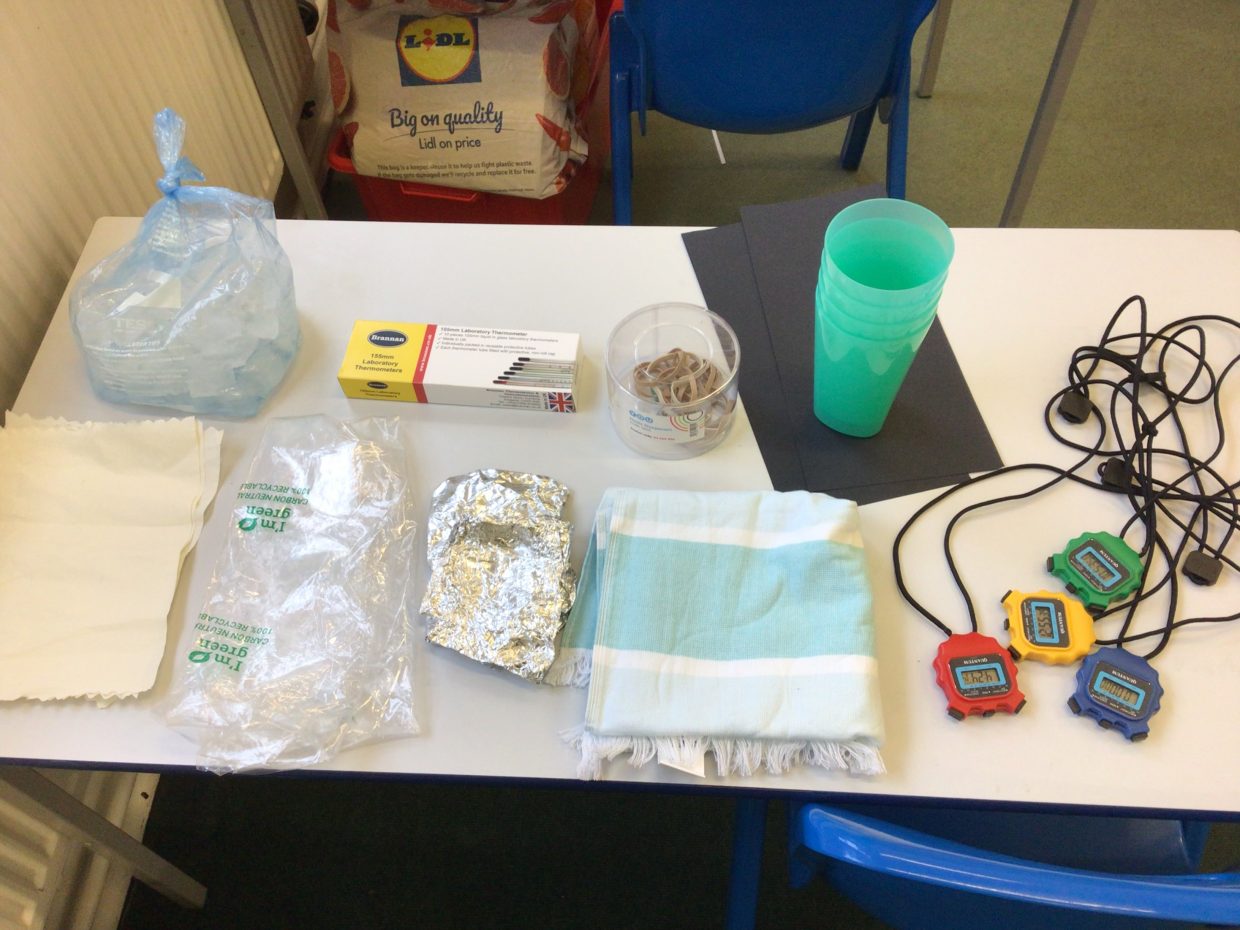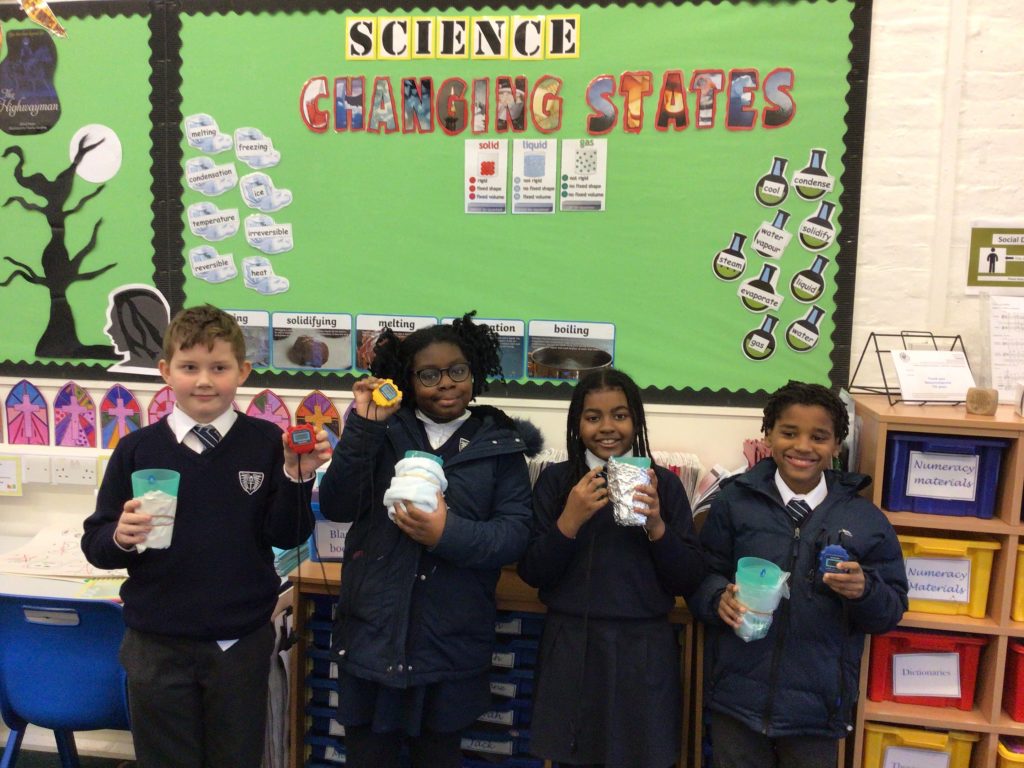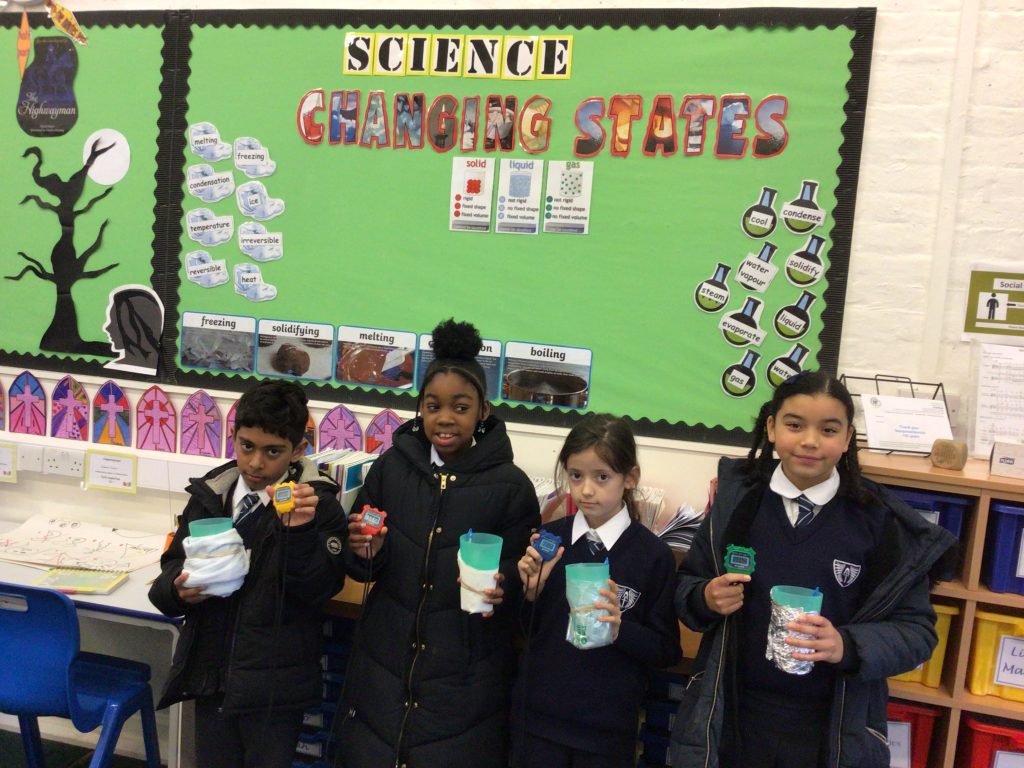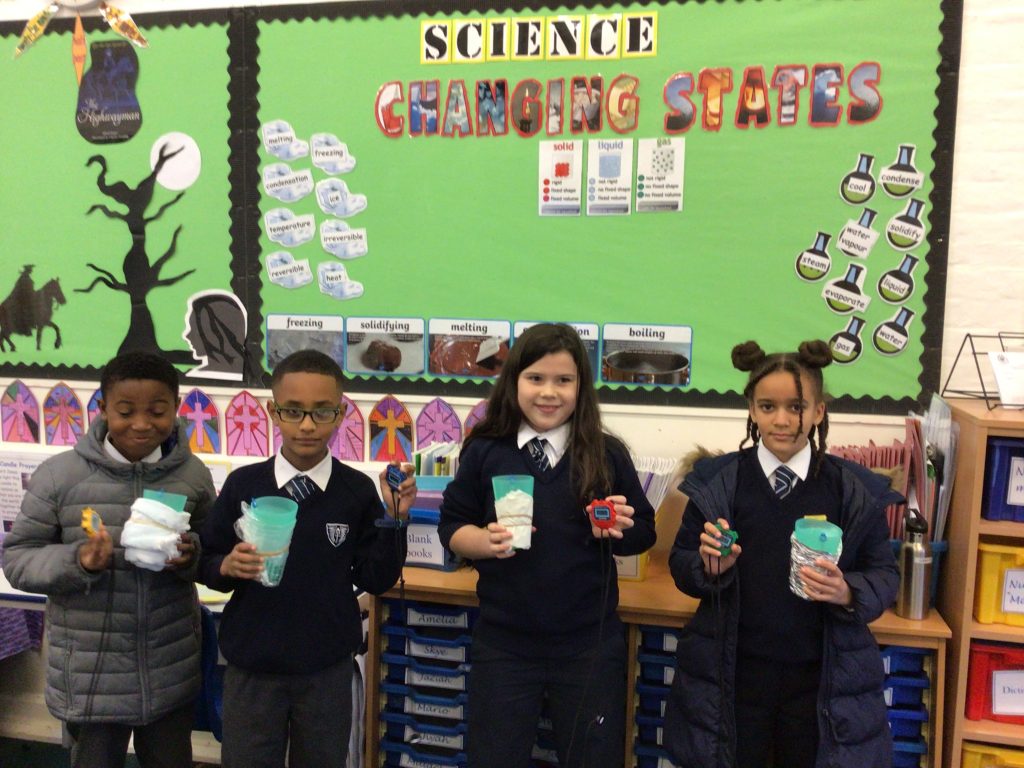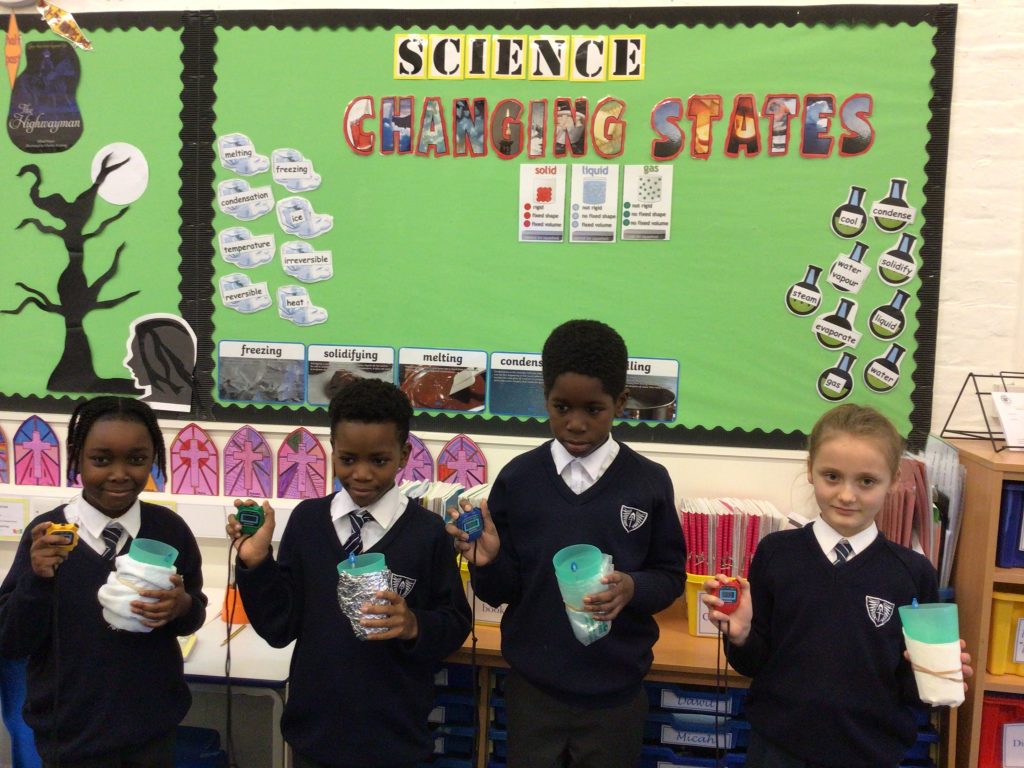Can you sort the following items into two groups?
What labels could you use for the groups?

The properties and changes of materials programme of study in the national curriculum for Science states that children should be taught to: give reasons, based on evidence from comparative and fair tests, for the particular uses of everyday materials, including metals, wood and plastic.
Year Five carried out an investigation to find the best material to use for the lining of a lunch box. Would it be a thermal insulator or a thermal conductor?
Here are the materials they used.
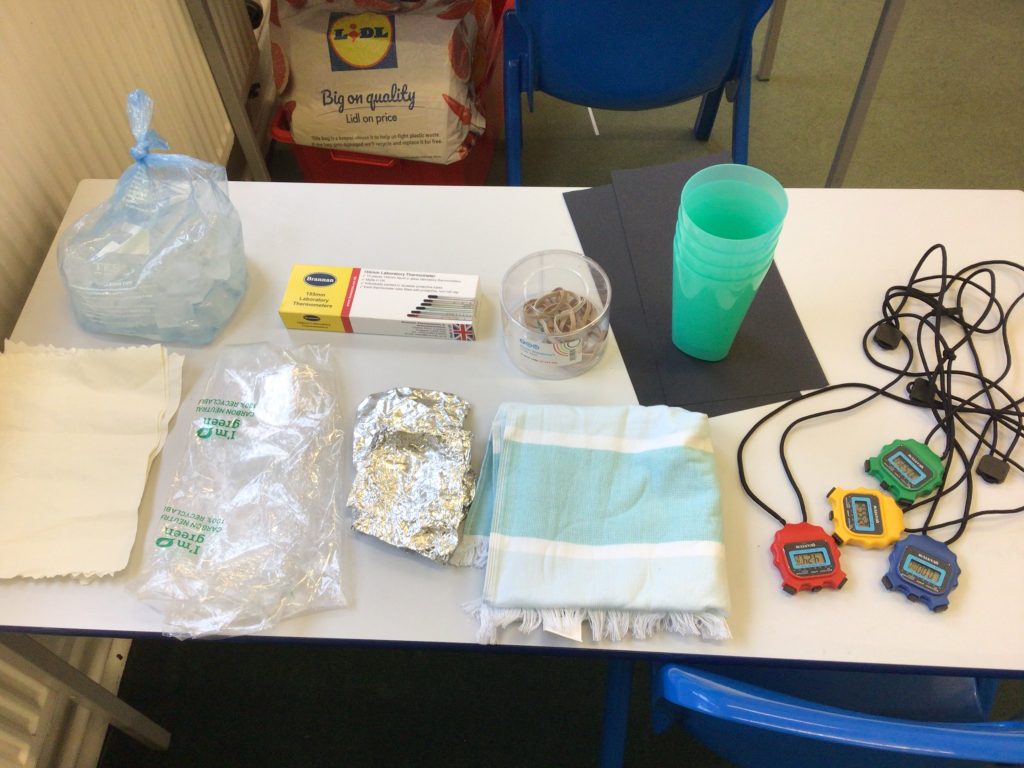
First, they worked out:
Independent variables – The materials being tested as thermal insulators.
Dependent variable – rate at which ice would melt (change in temperature)
Controlled variables – what was kept the same e.g. the containers, amount of ice, stopwatches
Year 5 carried out the investigation and concluded, from their results, that the woollen cloth was the best thermal insulator from the choice of materials they had selected. This would keep the contents of the lunch box freshest as it would keep it cool the longest.
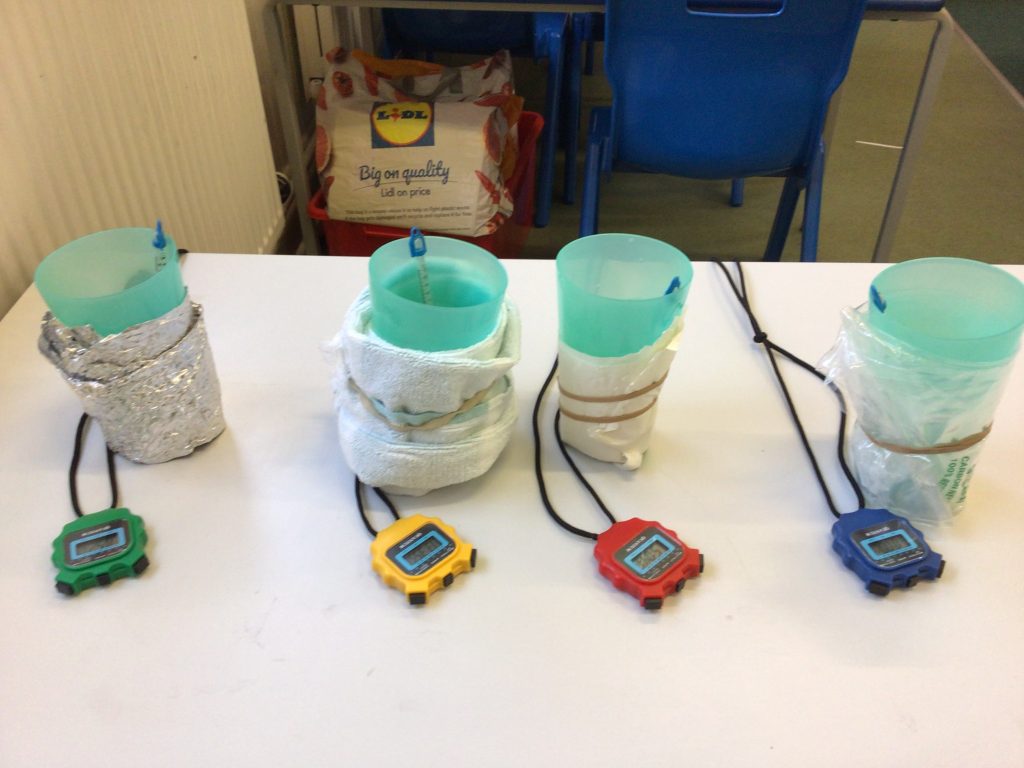
A thermal insulator does not allow heat to pass through it easily. On the other hand, thermal conductors allow heat to pass through them easily.
So now we know which material from our selection is best to line a lunch box.
Where else could the results of this information be useful?
What else could we try to keep cool for a long time by not allowing heat to pass through easily?
